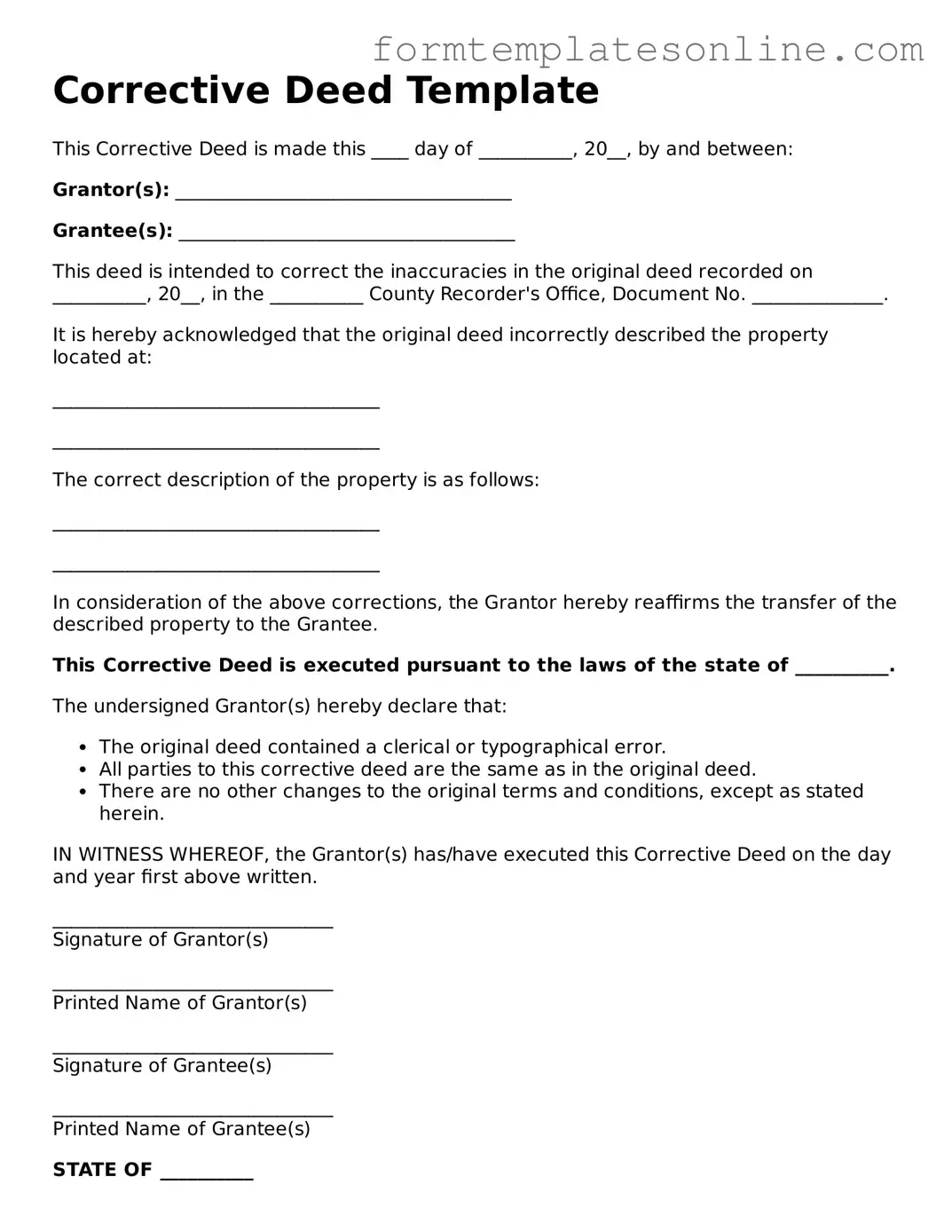Corrective Deed Template
This Corrective Deed is made this ____ day of __________, 20__, by and between:
Grantor(s): ____________________________________
Grantee(s): ____________________________________
This deed is intended to correct the inaccuracies in the original deed recorded on __________, 20__, in the __________ County Recorder's Office, Document No. ______________.
It is hereby acknowledged that the original deed incorrectly described the property located at:
___________________________________
___________________________________
The correct description of the property is as follows:
___________________________________
___________________________________
In consideration of the above corrections, the Grantor hereby reaffirms the transfer of the described property to the Grantee.
This Corrective Deed is executed pursuant to the laws of the state of __________.
The undersigned Grantor(s) hereby declare that:
- The original deed contained a clerical or typographical error.
- All parties to this corrective deed are the same as in the original deed.
- There are no other changes to the original terms and conditions, except as stated herein.
IN WITNESS WHEREOF, the Grantor(s) has/have executed this Corrective Deed on the day and year first above written.
______________________________
Signature of Grantor(s)
______________________________
Printed Name of Grantor(s)
______________________________
Signature of Grantee(s)
______________________________
Printed Name of Grantee(s)
STATE OF __________
County of _______________
Subscribed and sworn to before me this ____ day of __________, 20__.
______________________________
Notary Public
My commission expires: ________________
